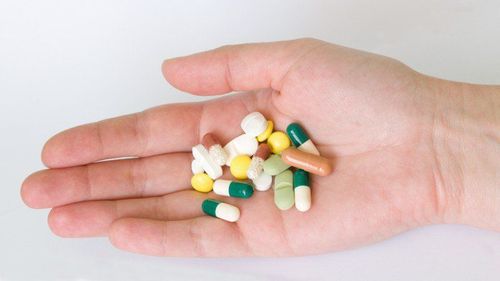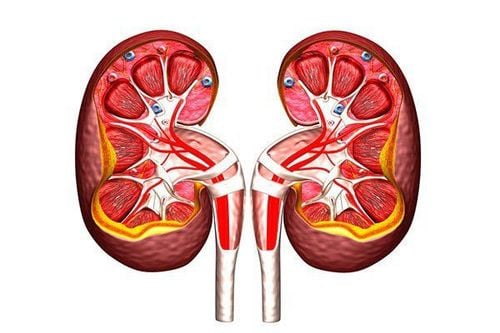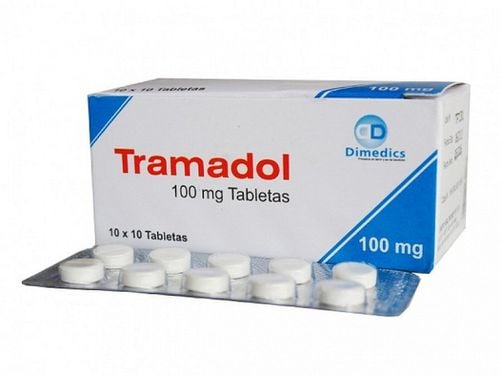Tramadol is classified as a centrally acting opioid analgesic. It is formulated in tablet or capsule form. The use of this medication may lead to adverse effects, including visual disturbances, nausea, and abdominal pain, etc... Consequently, patients are advised to conduct thorough research and seek guidance from their healthcare provider.
1. The pharmacological mechanism of Tramadol
Tramadol is classified as a synthetic analgesic that exerts its pain-relieving effects through a central mechanism and has the potential to cause dependence similar to morphine. Tramadol and its metabolite such as O-desmethyl tramadol - M1 can bind to M-opioid receptors in neurons while also inhibiting the reuptake of norepinephrine and serotonin in pain-relieving cells. The M1 metabolite has a binding affinity for M receptors that is 200 times greater and exhibits analgesic effects that are six times more potent than Tramadol.
The analgesic effect can be observed within one hour of administration, reaching its peak after 2 to 3 hours. Unlike morphine, Tramadol does not induce histamine release and does not affect heart rate or left ventricular function. The therapeutic dose of Tramadol has less respiratory depression compared to morphine.
Tramadol is well absorbed through the gastrointestinal tract; however, the first-pass metabolism in the liver is more significant, resulting in an absolute bioavailability of approximately 75%. The time to reach maximum drug concentration in the blood varies between Tramadol and its metabolites, estimated to be around 2 hours after administration, while for the M1 metabolite, it is about 3 hours. Food has little effect on the absorption of the drug, and when the drug enters the body, it can bind to proteins at about 20% and is distributed to all organs with a volume of distribution of 2.7 liters/kg of body weight.
In the body, Tramadol is also metabolized through N- and O-demethylation reactions, catalyzed by the isoenzymes CYP3A4 and CYP2D6 which convert the drug into O-desmethyl tramadol, an analgesic. Therefore, the concomitant use of Tramadol with compounds that may induce allergic reactions involving isoenzymes can alter the pharmacological effects of Tramadol. Furthermore, the activity of the CYP2D6 enzyme has a genetic component.
Tramadol is primarily excreted through the kidneys, accounting for 90%, while the remaining 10% is eliminated through feces. In the body, Tramadol exists in an unmetabolized form at a rate of 30%, while the metabolized form accounts for 10%. The elimination half-life of Tramadol is approximately 6.3 hours, while the M1 metabolite has a longer half-life of about 7.4 hours.
The pharmacokinetics of Tramadol change little with age. In individuals over 75 years old, the elimination half-life is slightly increased. In patients with renal failure, the clearance of Tramadol is reduced in conjunction with the clearance of creatinine.
2. Indications and contraindications for the use of Tramadol.
Tramadol is indicated for the treatment of moderate to severe pain, or in cases where other analgesics are contraindicated or ineffective. However, Tramadol is contraindicated in individuals with a history of hypersensitivity to the drug or to opioid components. It is also not recommended for those currently taking monoamine oxidase inhibitors (MAOIs) or who have recently used these medications. Additionally, Tramadol is contraindicated in cases of severe hepatic impairment, severe respiratory depression, and in children under 15 years of age.
3. Dosage and Administration of Tramadol
The dosage of Tramadol depends on the individual patient's response as well as the condition being treated, whether acute or chronic.
- For acute pain, patients may use oral or rectal formulations. For Tramadol 50mg - 100mg, it can be administered via slow intravenous injection over 2 to 3 minutes, with doses given every 4 to 6 hours. When using extended-release tablets, patients can take them once or twice daily, with a total dose not exceeding 400 mg. For rectal administration, a dose of 100mg can be used, with a maximum of 4 doses per day.
In cases of postoperative pain, an initial dose of 100mg is recommended, followed by an additional 50mg after 10 to 20 minutes. The maximum total dose in the first hour can be 250mg, and after 4 to 6 hours, 50 to 100mg can be administered. The total maximum dose should not exceed 600mg. - For chronic pain, long-term use of the medication is advised, and rapid-acting analgesics are not necessary. Patients in this category should undergo treatment evaluation to assess the drug's effectiveness and appropriateness. The initial dose should be 25mg per day, with an increase of 25mg every 3 days, up to a maximum of 100mg per day, divided into 4 doses. If pain relief is not achieved, the dose can be increased by 50mg every 3 days until a total daily dose of 200mg or higher is reached. The appropriate dosing for patients can be increased by 50 to 100mg per dose, with intervals of 4 to 6 hours, ensuring that the total daily dose does not exceed 400mg.
- In patients with underlying conditions resulting in hepatic or renal impairment, it is necessary to reduce the dosage and extend the interval between doses. For instance, in patients with renal function impairment and a creatinine clearance of less than 30ml/min, the dosing interval should be 12 hours, with a total daily dose not exceeding 200mg. In cases of severe renal failure with a creatinine clearance of less than 10ml/min, Tramadol should not be used.
In case that a patient accidentally ingests an overdose of Tramadol and exhibits symptoms such as difficulty breathing, fainting, or seizures, etc,...It is essential to take the patient to the nearest medical facility for timely assistance to help them overcome the dangerous situation. Overdose of Tramadol overdose may lead to mortality at doses between 3 and 5 grams. In women weighing 40 kg, the minimum lethal dose may range from 0.5 to 1 gram. Management of an overdose situation may vary depending on the amount ingested. However, the initial priority should be to maintain adequate ventilation and administer intensive care to the patient. Additionally, anesthetics may be administered to prevent seizures. In cases of Tramadol toxicity, activated charcoal can be used to enhance absorption reduction of Tramadol in the body.
If a patient forgets a dose of Tramadol, they may take the missed dose as soon as possible. However, if the time between the missed dose and the next scheduled dose is too close, the patient should skip the missed dose and continue with the next dose. Patients should also be advised not to double the dose because this may lead to overdose and unwanted side effects that could adversely affect their condition.
Furthermore, Tramadol may cause various unwanted side effects of different severity in each patient, such as nausea, headache, dizziness, decreased concentration, dry mouth, and sweating, etc,…
The information presented above includes all important aspects related to Tramadol. Before use, it is advisable to read the information carefully and consult a specialist for the best recommendations.
Please dial HOTLINE for more information or register for an appointment HERE. Download MyVinmec app to make appointments faster and to manage your bookings easily.
To arrange an appointment, please call HOTLINE or make your reservation directly HERE. You may also download the MyVinmec app to schedule appointments faster and manage your reservations more conveniently.








